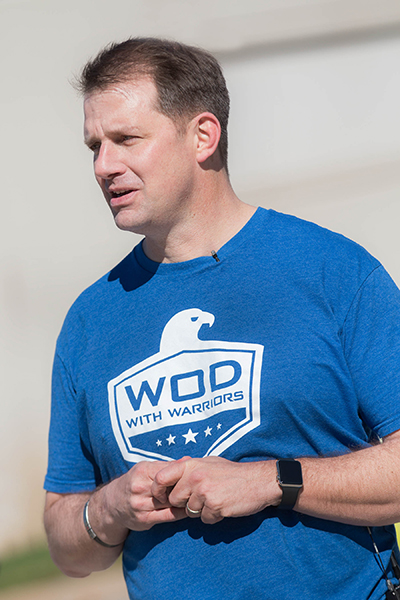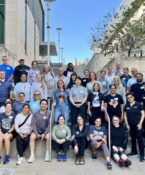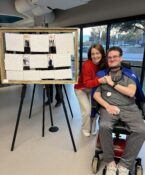What makes Jonathan Silk tick?

By Jeff Carlton
For Jonathan Silk, the Battle of Al Kut truly began when his truck crashed in the midst of a firefight near a bridge spanning the Tigris River in that eastern Iraqi city.
A scout platoon leader in the U.S. Army, Silk had just escaped his damaged truck when a rocket propelled grenade hit the ground about 15 feet in front of him. It was April 9, 2004 – Good Friday.
“It didn’t detonate, or I wouldn’t be here,” said Silk, now 46 and Executive Director of Leadership Development at UNT Health Science Center.
Instead, shrapnel splintered off and struck Silk in the chest, knocking him back. Protected by his body armor, he stayed in the fight, helped secure the bridge and evacuated nine wounded men.
Silk, who was awarded a Bronze Star for Valor for his actions on the bridge and a Purple Heart for being wounded by enemy fire, will run the 10-kilometer race this weekend at The Cowtown Marathon.
In his hands will be a U.S. flag that he had with him during his service in Afghanistan, a way to honor his fellow veterans. In his heart will be another reminder of his service: a carbon fiber valve that ticks audibly whenever his heart rate is elevated. It’s a souvenir of that day in Al Kut.
Months after the firefight, Silk was back in the United States when he learned why he had been struggling during physical training. A cardiovascular exam revealed a torn mitral valve in his heart caused by the concussive force of the RPG round. The injury, known as a mitral valve prolapse, meant that with every beat of his heart, only about 60 percent of his blood was making it through.
Surgeons removed the torn heart valve and inserted the carbon fiber replacement, a pricey piece of medical equipment that allows Silk to call himself “The $300,000 Man.”
The artificial valve also meant that Silk’s chest will forever after sound like the second hand of a grandfather clock whenever he goes for a jog or climbs a flight of stairs.
Officials told him at the time of the surgery that he would be permitted to retire from the Army with a generous pension. It was a deal Silk was unwilling to accept.
“They kept saying I was disabled,” Silk said. “But I didn’t see myself as disabled. I was wounded.”
Five months later, Silk rode a bicycle 20 miles as part of a relay team in a triathlon. Five months after that, he competed solo in a sprint triathlon. About one year later, he finished an Olympic-distance triathlon. And in 2009, he completed the New Orleans Half-Ironman triathlon.
He also stayed in the Army for another decade, retiring at the end of 2015 with 28 years of service. The final three were spent as a faculty member teaching leadership at the U.S. Military Academy in West Point, N.Y.
He joined the Health Science Center in November in the Office of People Development.
Although new to Texas, Silk already has found another way to serve. He is active in the Dallas/ Fort Worth chapter of Team Red, White and Blue, an organization that helps veterans transition back into communities through physical and social activities.
That lifetime of service and patriotism is why Silk will carry a flag from start to finish during his upcoming race, ticking loudly with each stride.
“A lot of people I know were wounded or killed serving that flag, serving our nation,” he said. “I am running with the flag as a memorial to create awareness and remembrance.”





Social media